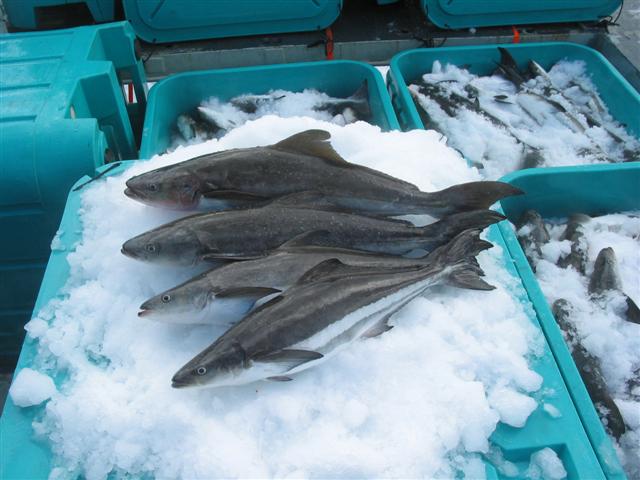Cobia: The Unsung King of the Coastal Waters

By Derrick R. Stallings – HuntingOfficer.com
If you’ve ever spent time around warm coastal waters—especially in the Gulf of Mexico, the southeastern U.S., or even as far as Australia—you may have heard whispers about a fish called cobia. But unless you’re an angler or chef, you might not know just how special this fish truly is.
Cobia (Rachycentron canadum) might not win any beauty contests, but they more than make up for it with their powerful fight on the line, impressive size, rapid growth, and mouthwatering flavor. Let’s dive into everything that makes cobia an incredible species, from its biology and habitat to how to catch one—and, most importantly, how to cook it.
Where Are Cobia Found?
Cobia are warm-water fish that prefer subtropical and tropical waters. They’re commonly found in:
- Western Atlantic: From Massachusetts all the way down through the Gulf of Mexico to northern Argentina.
- Eastern Atlantic and Indo-Pacific: They’re also found off the coasts of West Africa and throughout parts of the Indian and Pacific Oceans.
- Seasonal Migration: Along the U.S. Atlantic coast, cobia migrate northward in the spring and southward in the fall. Peak seasons often vary by region, but in the Gulf of Mexico and southeastern U.S., late spring through summer is prime time.
They’re solitary for the most part or hang out in small groups, often lurking around buoys, pilings, wrecks, and even large marine animals like sharks, manta rays, and turtles.
The Art of Catching Cobia
Tackle and Gear:
Cobia are strong, fast, and have stamina. They can grow very large, so you’ll need to be prepared.
- Rod/Reel: Medium to heavy spinning or conventional tackle.
- Line: 30-50 lb braided line with a strong fluorocarbon leader (30-60 lb).
- Hooks: 5/0 to 9/0 circle hooks are popular, especially for live bait.
Bait and Lures:
- Live Bait: Eels, pinfish, mullet, and crabs are favorites.
- Artificial Lures: Bucktail jigs, swimbaits, and topwater plugs can be effective when sight-casting to cruising cobia.
Sight Fishing:
One of the most exciting ways to catch cobia is by sight-fishing. They often swim near the surface, especially when the water is warm. Anglers spot them from towers or boats and cast directly to them—talk about adrenaline!
Cobia Life Cycle and Growth
Cobia are incredibly fast-growing and mature early. Here’s a breakdown of their life cycle:
- Spawning: Takes place in warm months, often May through August, in offshore waters.
- Eggs and Larvae: Cobia spawn multiple times per season, releasing hundreds of thousands of eggs. The larvae are planktonic, drifting in ocean currents.
- Juveniles: After a few weeks, the young settle in coastal habitats. They grow rapidly—often reaching 10-12 lbs in their first year.
- Maturity: Most cobia reach sexual maturity by age 2-3.
- Lifespan: Up to 10-15 years in the wild, though fishing pressure often shortens this.
Size and Gender Differences
Cobia are large, torpedo-shaped fish with a flat head, brownish bodies, and a white belly. Their long dorsal fin gives them a shark-like silhouette, which leads many to mistake them at first glance.
- Average Size: 20–50 lbs, but 60–80 lbs isn’t rare.
- Record Size: Over 135 lbs!
- Males vs. Females: Females generally grow larger than males. In fact, most cobia over 40 lbs are female. They have similar appearances, though males may mature slightly earlier.
Why Cobia Is a Culinary Star
Cobia’s white, firm, and mild-flavored flesh makes it a chef’s dream. It holds up well to grilling, baking, searing, and even raw preparations like ceviche or sashimi.
It’s often called the “wagyu of the sea” because of its richness and buttery texture.
Recipe: Grilled Cobia with Mango Avocado Salsa
Ingredients:
For the Fish:
- 4 cobia fillets (6-8 oz each)
- 2 tbsp olive oil
- 1 tsp smoked paprika
- 1 tsp garlic powder
- 1 tsp sea salt
- ½ tsp black pepper
- Juice of 1 lime
For the Mango Avocado Salsa:
- 1 ripe mango, diced
- 1 ripe avocado, diced
- ½ small red onion, finely chopped
- 1 jalapeño, seeded and minced
- Juice of 1 lime
- 2 tbsp chopped fresh cilantro
- Salt to taste
Instructions:
Step 1: Prep the Fish
- Pat the cobia fillets dry.
- Mix olive oil, lime juice, smoked paprika, garlic powder, salt, and pepper in a small bowl.
- Rub this mixture generously onto each fillet and let marinate for 10–15 minutes.
Step 2: Make the Salsa
- Combine the mango, avocado, red onion, jalapeño, lime juice, and cilantro in a bowl.
- Gently toss. Season with salt to taste.
- Chill while you grill the fish.
Step 3: Grill the Cobia
- Preheat grill to medium-high. Oil the grates well.
- Grill fillets for about 4–5 minutes per side, depending on thickness, until the fish is opaque and flakes easily.
Step 4: Plate and Serve
- Serve each fillet with a generous scoop of mango avocado salsa on top.
- Pair with coconut rice or grilled vegetables for a full meal.
Final Thoughts
Cobia might not be as famous as tuna or salmon, but it deserves a spot in the hall of fame for both anglers and food lovers. From its thrilling fight to its rich, versatile flavor, it’s a fish that earns respect on every front.
Whether you’re chasing one from a boat in the Gulf or just trying a new recipe at home, cobia is a fish worth knowing—and tasting.
If you’re looking for a sustainable, delicious fish to try, or a thrilling catch to pursue, cobia should absolutely be on your radar. Got a cobia fishing story or a favorite recipe? Drop it in the comments—we’d love to hear it!
*AI Was Used In The Creation Of This Post
Discover more from HuntingOfficer
Subscribe to get the latest posts sent to your email.
